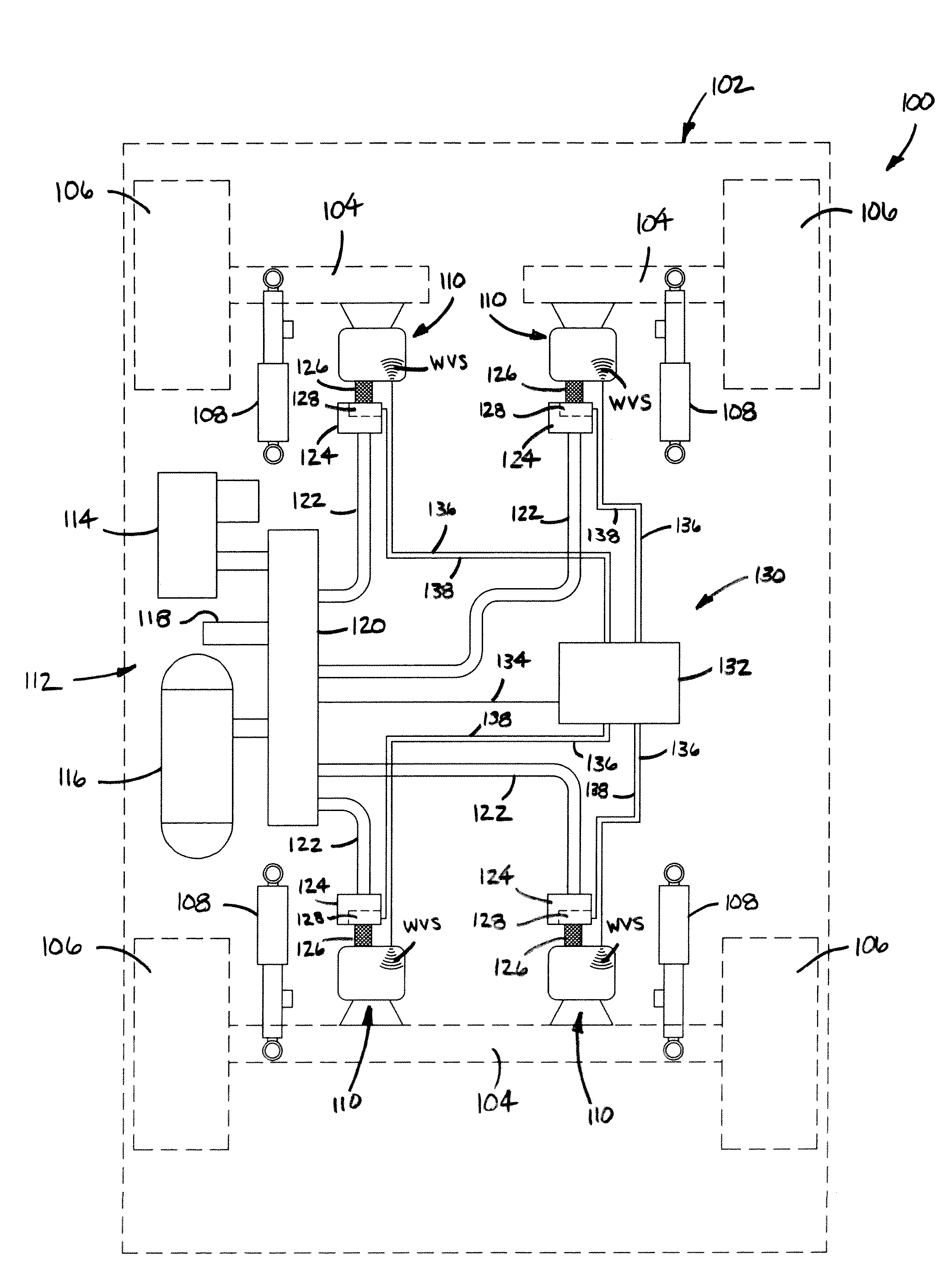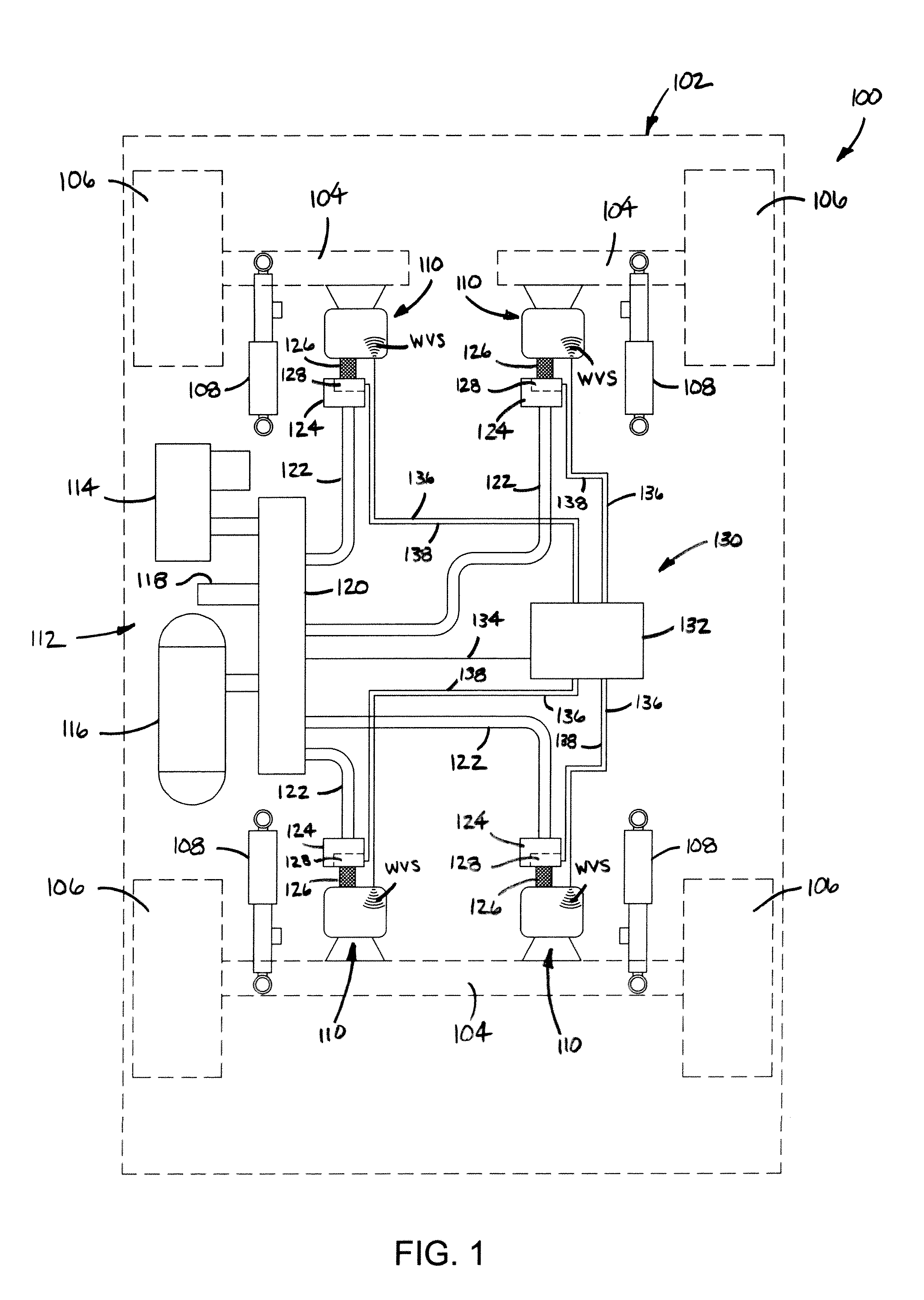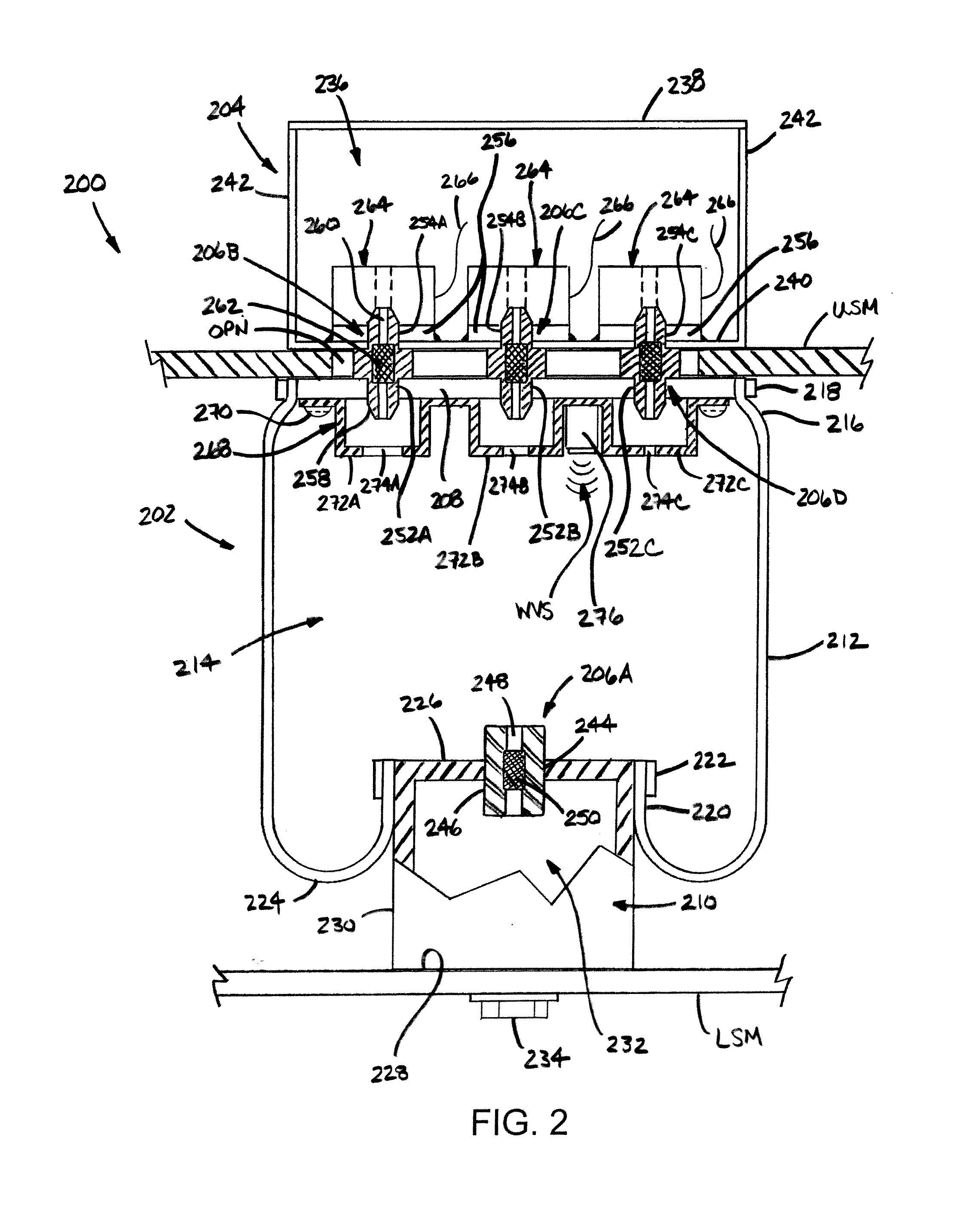Gas spring assembly
a technology of gas springs and springs, which is applied in the direction of shock absorbers, mechanical devices, transportation and packaging, etc., can solve the problems of reduced resistance to gas flow, less comfort, and minimal damping characteristics, and achieve the effect of dissipating kinetic energy and dissipating kinetic energy
- Summary
- Abstract
- Description
- Claims
- Application Information
AI Technical Summary
Benefits of technology
Problems solved by technology
Method used
Image
Examples
Embodiment Construction
[0019]Turning now to the drawings wherein the showings are for the purpose of illustrating exemplary embodiments of the present novel concept and not for limiting the same, FIG. 1 illustrates a vehicle 100 having a sprung mass, such as a vehicle body 102, for example, and an unsprung mass, such as axles 104 and / or wheels 106, for example. Additionally, plurality of liquid damping members, such as shock absorbers 108, for example, can be secured between the sprung and unsprung masses of the vehicle in a suitable manner. It will be appreciated, however, that such damping members are optionally included in the exemplary embodiment in FIG. 1. Additionally, a plurality of gas spring assemblies 110 (which may also be referred to herein as “gas spring and gas damper assemblies”) are disposed between the sprung and unsprung masses of the vehicle, such as adjacent wheels 106 and shock absorbers 108 as shown in FIG. 1, for example.
[0020]Vehicle 100 also includes a pressurized gas system 112 t...
PUM
 Login to View More
Login to View More Abstract
Description
Claims
Application Information
 Login to View More
Login to View More - R&D
- Intellectual Property
- Life Sciences
- Materials
- Tech Scout
- Unparalleled Data Quality
- Higher Quality Content
- 60% Fewer Hallucinations
Browse by: Latest US Patents, China's latest patents, Technical Efficacy Thesaurus, Application Domain, Technology Topic, Popular Technical Reports.
© 2025 PatSnap. All rights reserved.Legal|Privacy policy|Modern Slavery Act Transparency Statement|Sitemap|About US| Contact US: help@patsnap.com



